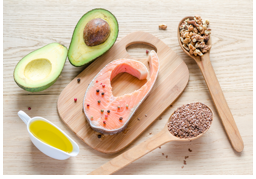[fusion_builder_container hundred_percent=”no” equal_height_columns=”no” hide_on_mobile=”small-visibility,medium-visibility,large-visibility” background_position=”center center” background_repeat=”no-repeat” fade=”no” background_parallax=”none” parallax_speed=”0.3″ video_aspect_ratio=”16:9″ video_loop=”yes” video_mute=”yes” border_style=”solid”][fusion_builder_row][fusion_builder_column type=”1_1″ layout=”1_1″ background_position=”left top” background_color=”” border_size=”” border_color=”” border_style=”solid” border_position=”all” spacing=”yes” background_image=”” background_repeat=”no-repeat” padding=”” margin_top=”0px” margin_bottom=”0px” class=”” id=”” animation_type=”” animation_speed=”0.3″ animation_direction=”left” hide_on_mobile=”small-visibility,medium-visibility,large-visibility” center_content=”no” last=”no” min_height=”” hover_type=”none” link=””][fusion_text]
Though certainly not desirable when it covers our hard-fought muscle, fat in its dietary form, is important for helping to establish the gains we desire. Many novice trainees assume fat to be a forbidden food that may only be included in trace amounts if a shredded appearance is to be theirs.
Nothing could be further from the truth!
Confusion often arises over which fats are best to include in our diet and when to incorporate them. Such confusion may lead to a blanket ban on the specific inclusion of this vital dietary component. The  first thing we must remember is that not all fats are created equal. There are both good and bad types, and to improve our health and boost our muscle gains through their inclusion, we must know the difference. A category of lipid (naturally occurring molecules that function biologically to store energy, form structural components of cell membranes and, as signalers, help to regulate cellular responses), fats come in two main varieties: good (polyunsaturated, which include the essential fatty acids omega 3, 6 and 9, and monounsaturated, additional heart-healthy fats which feature olive oil and which reduce harmful LDL cholesterol) and bad (saturated, found in animal products such as cream, cheese and fatty meats and often associated with heart disease and obesity).
first thing we must remember is that not all fats are created equal. There are both good and bad types, and to improve our health and boost our muscle gains through their inclusion, we must know the difference. A category of lipid (naturally occurring molecules that function biologically to store energy, form structural components of cell membranes and, as signalers, help to regulate cellular responses), fats come in two main varieties: good (polyunsaturated, which include the essential fatty acids omega 3, 6 and 9, and monounsaturated, additional heart-healthy fats which feature olive oil and which reduce harmful LDL cholesterol) and bad (saturated, found in animal products such as cream, cheese and fatty meats and often associated with heart disease and obesity).
Trans fats are also worth noting, created artificially through a process of hydrogenation to enhance the production of energy-robbing convenience foods including baked goods, difficult to metabolize, known to lower good HDL cholesterol while increasing bad LDL cholesterol, and should be avoided at all costs.
A calorie dense macronutrient, all dietary fat regardless of its type, contains nine calories per gram, thus providing more energy than either both carbs or proteins which provide four calories per gram.
Fats (the good type and some saturated) play key roles in numerous bodily functions. They assist the proper development and functioning of our hormonal and nervous systems (including the brain), cushion vital organs, keep skin healthy, help our body absorb vitamins and minerals from the foods we eat, and provide insulation against heat loss. Stored as fatty acids called triglycerides in specific cells called adipocytes, groups of fat cells (adipose tissue) may over an individual’s lifetime accumulate to a greater or lesser degree depending on their genetic predisposition to developing them and poor ability to burn fat as a fuel source, and lifestyle factors. While such individuals must limit their caloric intake (from both carbohydrates and fats) and exercise sufficiently so as to burn fat faster than it can accumulate, others appear to remain trim despite poor nutrition and inactivity.
 As with all other training mandates, eating and training for fat loss must therefore be considered on an individual basis. Too few fats and those predisposed to burning calories faster, the traditional ectomorphic-lifter, may experience muscle loss and low energy levels, while others with a greater propensity for storing fat may need to further limit their fat intake.
As with all other training mandates, eating and training for fat loss must therefore be considered on an individual basis. Too few fats and those predisposed to burning calories faster, the traditional ectomorphic-lifter, may experience muscle loss and low energy levels, while others with a greater propensity for storing fat may need to further limit their fat intake.
As bodybuilders, keeping subcutaneous fat levels down to a respectable 10-12% of total body mass offseason is an important way to not only look better but to also improve the way we feel and perform and how fast we grow (excessive adipose may suppress testosterone production and the sluggishness caused by the extra padding can interfere with training energy levels).
Drop by tomorrow for part 2 for some fat recommendations to optimize your health and performance!
[/fusion_text][/fusion_builder_column][/fusion_builder_row][/fusion_builder_container]